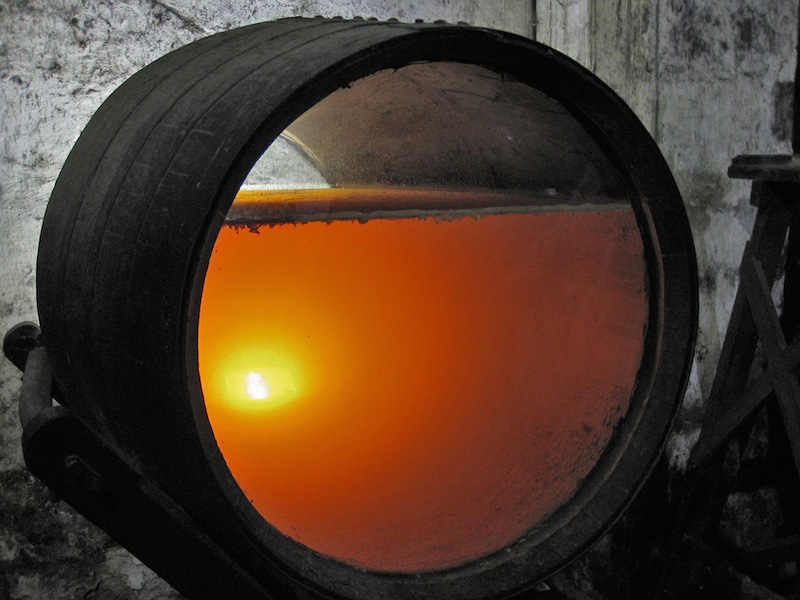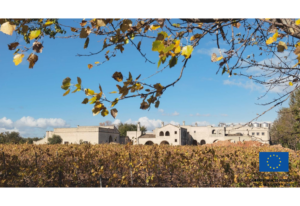Sherry is an Anglicization that comes from the name of the Spanish city of “Jerez de la Frontera,” which is how these wines are named in Spain. Produced in a very small region of southern Spain, sherry is considered a fortified wine, meaning it is stronger in alcohol volume than normal grape wines, because as part of the production process alcohol is added to the must (“must” is the juice from crushed grapes, usually before it has been fermented or while it is fermenting; once fully fermented, must becomes wine) to increase the alcohol level, originally as a means to preserve the wine.
Essential to the production of sherry is the growth of a layer of film forming yeast on the top of the wine. This is known as the flor, and it forms spontaneously from yeast that is abundant in the winery environment when the casks are left not completely filled. The growth of the flor protects the developing wine from oxidation and contributes a distinctive flavor to the wine through metabolizing alcohol to the nutty, distinctive organic acetaldehyde scent and taste compounds. To keep the flor healthy, casks are periodically topped up with fresh wine to maintain the nutrients that the yeast needs to survive.
At the end of the year when fermentation is complete and the wine is still on its lees, it is classified and then fortified. This classification determines the destiny of the wine. The oenologist will taste through the casks with a view to separating out the lighter, more elegant wines to become fino, and the heavier, darker wines to become olorosos. Fino wines will then be fortified to 15 o alcohol, and olorosos to 17 or 18 o.
There are many ways to skin a cat, and there are many ways to classify sherry wines, so I will give you the most common classification: Generosos and Generoso Liqueur wines. The former is most common in Spain and offers the more interesting wines while Generoso Liqueur is more often seen in the UK, and is the extra sweet wine that your grandma might love.
Also important to the flavor of sherry is the solera system. This is a rather complex arrangement of barrels where wine travels from one to another in a precise order during its maturation and aging. The lowest level of butts is known as the solera, which is the name also used for the entire system. This is the final stage in the maturation process and this is where the wine leaves the system. Up to one third of the wine may be withdrawn each year from these barrels, but the amount typically taken is just 10 percent.
Fino and Manzanilla are the most delicate types of sherries and should be drunk soon after opening. Amontillados and Olorosos will keep for longer, while sweeter versions such as PX and blended cream sherries are able to last several weeks or even months after opening, since the sugar content acts as a preservative.
In Vietnam you can enjoy sherry wines in restaurants like Shri and Lubu, or you can buy your own bottles at The Warehouse and Red Apron. My favorite so far is Armada from Sandeman – it is absolutely gorgeous.
Alfredo De La Casa has been organizing wine tastings for over 20 years, published three wine books, including the Gourmand award winner for best wine education book. You can reach him at www.wineinvietnam.com.









